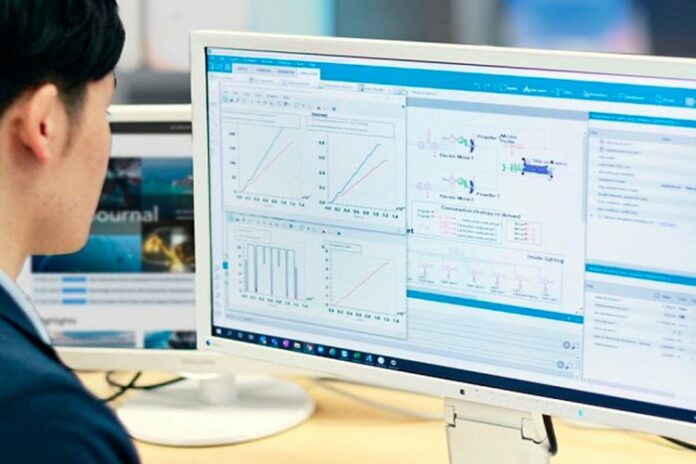NYK and NYK Group company MTI Co., Ltd. (“MTI”), together with the American Bureau of Shipping (“ABS”) and Winterthur Gas & Diesel Ltd. (“WinGD”), have started joint research for optimization of ship design by utilizing a battery-hybrid system to aid ship propulsion and thus reduce GHG (greenhouse gas) emissions from vessels.
A vessel’s main-engine revolutions may increase significantly when a vessel tries to maintain its sailing speed during strong waves and winds. This phenomenon is called “load fluctuation.” The shaft generator may also increase the burden on the main engine. The shaft generator is connected to the ship’s propeller shaft to generate electricity within the ship as the main engine rotates.
The battery-hybrid system is a mechanism that decreases the burden that the shaft generator places on the main engine. This battery-hybrid system supplies electricity from the battery when the load on the main engine fluctuates. As a result, the power that the ship can use for its propulsion can be increased, and the operation of the main engine thus becomes more efficient.
For these advantages, this system is being introduced to more oceangoing vessels. In addition, the use of the battery-hybrid system will lead to a reduction of GHG emissions since instead of a generator, which requires oil, it can supply electricity for the operation of onboard equipment during daily operations.
In this joint research, NYK, MTI, ABS, and WinGD aim to create an integrated simulation model of ships by combining the modeling technologies of each company to maximize GHG emission reduction through use of this battery-hybrid system.
Specifically, an integrated model of an entire ship will be created by combining NYK and MTI’s modeling technologies for actual sea performance and WinGD’s modeling technology for engine plants that include batteries. Then, using ABS’s advice on the evaluation of the effect of GHG reduction.
NYK, MTI and WinGD will then jointly design a ship in digital space and together with ABS conduct simulations of navigation using a scenario that assumes meteorological conditions in actual seas. By considering the issues clarified within the simulation, NYK, MTI and WinGD will further improve the simulation model to optimize ship design.
The ship model will be verified in accordance with a modeling and simulation framework to be developed by ABS.



